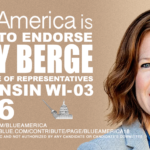You can't possibly praise the Occupy movement enough for their response to the devastation of Hurricane Sandy. There are the volunteers who deliver food, water, and clothing to those in need, and even experienced medical professionals going door-to-door in elderly communities to provide whatever assistance is needed far quicker, and it seems they're doing it far more thoroughly than the traditional first-response groups.
Via:
Anna Lederman, a Russian-speaking nurse working with Occupy Sandy, walked up fourteen flights of a pitch-black stairwell in the Surfside Gardens housing complex in Coney Island on Monday and knocked on an apartment door, the only light coming from her small headlamp. An elderly woman wearing a babushka, walking slowly with a cane, told Lederman in Russian that she was all alone. She had her medications, but could not get down the stairs, and needed food. “This,” she said, “is like the second blockade of Leningrad.”
Many New Yorkers affected by the storm have complained about the uneven response from the city, FEMA, and Red Cross. Veterans of the Occupy movement, with experience in New Orleans at the Common Ground Clinic after Katrina, and in Zuccotti Park last year, have stepped in to fill the gap. “That’s one of the reasons we mobilized here first,” said Becca Piser, a street medic trained as a first-responder. “No one’s telling us where to go or not to go.” The Occupy crew in Coney Island also included some of Lederman's fellow nurses from Columbia University, who had been working in shelters and on the Occupy mission to Far Rockaway; a Russian and Spanish translator, who had answered the call on Facebook; Shawn Westfahl, one of the first medics at the Occupy encampment in Zuccotti Park; and Roger Benham and Jeff “Fidget” (his Occupy name), who worked together doing disaster relief in New Orleans and in Haiti after the earthquake.
...
FEMA and the NYPD have been distributing MREs — freeze-dried meals-ready-to-eat—that come in heavy plastic pouches and must be handled correctly to self-heat, have a high sodium content that is problematic for elderly people and those with hypertension, and have instructions printed only in English. A few packets lay scattered in the dark hallways. A number of residents said they did not know what to do with them.
...
It was growing dark. Piser and Westfahl left to answer one last dispatch call for a cancer patient who needed a daily dose of chemo. Fidget duct-taped a sign on the outside of the building saying that every floor had been checked by Occupy Sandy for urgent needs. “It comes down to the fact that they got these knocks,” said Lederman, the nurse. “I think it could be a psychological disaster — at the very least — if nobody at all came for six days.”
No doubt the strategy of Occupy Sandy's emergency response will be examined for some time to come, and I wouldn't be at all surprised to see the movement's "teach-in" sessions become even more popular and in demand.
If you're able, please visit the Occupy Sandy website and donate if you're able, or better yet -- volunteer to help.












